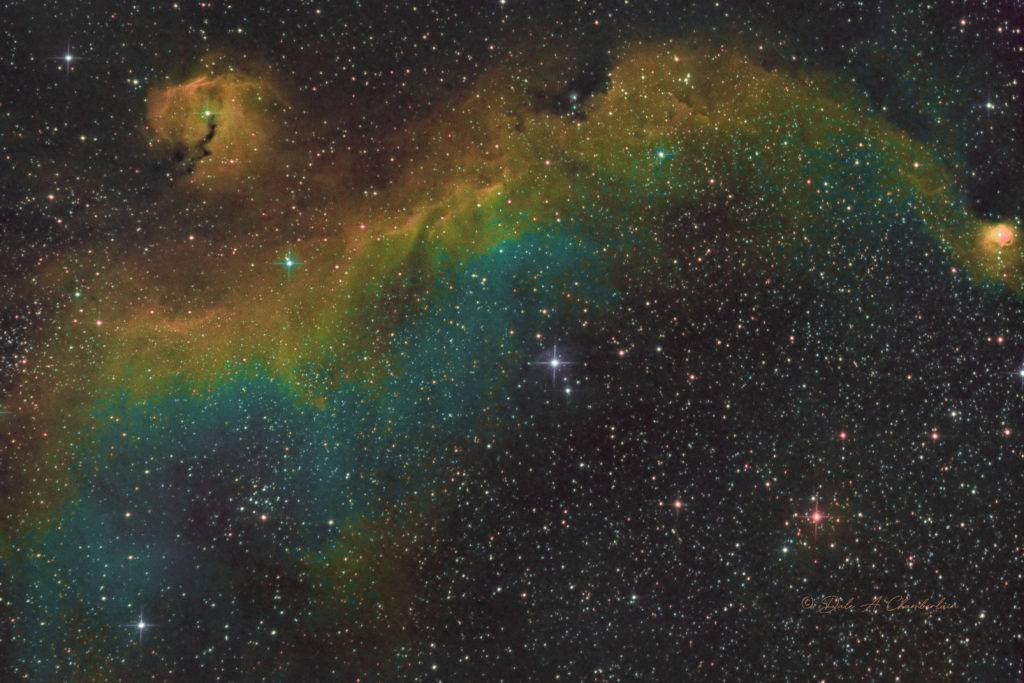
Object: The Seagull Nebula, aka IC 2177, spreads its wings with a span of over 100 light-years and resembles a seagull in flight. This cloud of gas and dust is located about 3700 light-years away from Earth. The Seagull Nebula lies just on the border between the constellations of Monoceros (The Unicorn) and Canis Major (The Great Dog) and is close to Sirius, the brightest star in the night sky. The nebula lies more than four hundred times further away than the famous star.
The complex of gas and dust that forms the head of the seagull glows brightly in the sky due to the strong ultraviolet radiation coming mostly from one brilliant young star — HD 53367 — that can be spotted in the centre of the image and could be taken to be the seagull’s eye. The radiation from the young stars causes the surrounding hydrogen gas to glow with a rich red color. Light from the hot blue-white stars is also scattered off the tiny dust particles in the nebula to create a contrasting blue haze in some parts of the picture.
Although a small bright clump in the Seagull Nebula complex was observed for the first time by the German-British astronomer Sir William Herschel back in 1785, the part shown here had to await photographic discovery about a century later.
Taken: March 3 & 6, 2020
Telescope: Skywatcher Esprit 80 ED Triplet APO Refractor
Mount: Paramount ME II unguided
Camera: ZWO ASI1600MM-Pro (cooled to -15C; gain 300) Bin 1×1.
Focuser: Starizona Micro Touch Autofocuser
Rotator: Optec Pixys LE camera field rotator
Filters used: Hydrogen-alpha, Oxygen-III and Sulphur-II on a ZWO 8 position filter wheel
Exposures: 5×300 sec., 19×120 sec. Hydrogen-alpha, 40×120 sec. Oxygen-III and 40×120 sec. Sulphur II for a total exposure time of 3.72 hours; calibrated with 40 dark frames, 40 flat frames with 40 dark-flats
Palette: SHO (Hubble)
Seeing Conditions:
Processed with PixInsight and Photoshop CC 2021 (Weighted Batch Pre-processing script used for calibration, evaluation, registration and integration of subframes)